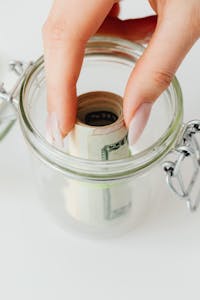In an unpredictable world, an emergency fund isn’t a luxury — it’s a necessity.
Even if your budget is tight, you can build financial security starting today.
Here’s exactly how.

1. What Is an Emergency Fund?
An emergency fund is a stash of money set aside to cover unexpected expenses — medical bills, car repairs, job loss — without going into debt.
Rule of thumb:
Save 3–6 months’ worth of living expenses.
2. Why It’s Critical (Especially on a Tight Budget)
If you live paycheck to paycheck, a single unexpected expense can spiral into debt.
An emergency fund gives you peace of mind, flexibility, and control.
Without it, even small emergencies become crises.
3. How to Start Small
Saving $500–$1,000 is a great first milestone.
Here’s how even low-income earners can get there:
- Automate savings: Even $5–$10 a week adds up.
- Round up purchases: Use apps that round up spare change into savings.
- Sell unused items: Declutter and earn extra cash.
4. Cut Expenses Strategically
You don’t have to live miserably — just tweak smartly.
- Cancel subscriptions: Audit and cut services you don’t truly use.
- Switch to cheaper alternatives: Generic brands, public transport, energy-saving hacks.
- Cook at home: Meal prepping can save hundreds per month.
Tip: Treat saving like a monthly bill you must pay.
5. Make Saving Automatic
Set up a direct deposit from your paycheck into a separate savings account.
Out of sight = out of temptation.
Even a tiny amount automatically saved builds momentum.
6. Keep It Separate
Don’t mix your emergency fund with regular checking.
Use a high-yield savings account so your money earns a little interest while staying accessible.
7. Celebrate Milestones
Each time you hit $100, $500, $1,000 — celebrate!
Small wins keep motivation high when building a financial safety net.
Q: How much should I aim to save first?
A: Start with $500–$1,000 as your mini emergency fund goal. Then build up to 3–6 months of basic living expenses.
Q: Where should I keep my emergency fund?
A: A separate high-yield savings account — not your everyday checking account.
Q: What counts as an emergency?
A: True emergencies include medical bills, urgent home or car repairs, or job loss — not vacations, shopping, or non-urgent wants.
Q: How can I save if I have debt too?
A: Build a small starter emergency fund while making minimum debt payments. Then prioritize debt repayment with extra funds.
Don’t wait for the perfect time — start your emergency fund today, even if it’s just a few dollars a week.
Your future self will thank you.

I’m EKBAL HOSSAIN MONDAL, the creator of SmartSolveTips.com — a blog dedicated to helping people improve productivity, avoid digital burnout, and live better online. With years of hands-on experience in self-development and digital wellness, I write practical tips and tools to help you stay focused and thrive in a fast-paced digital world.



